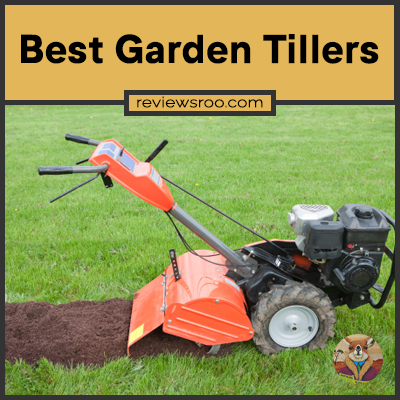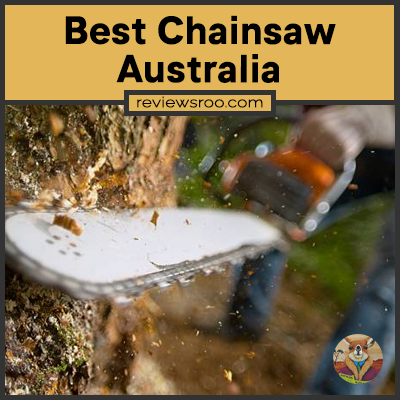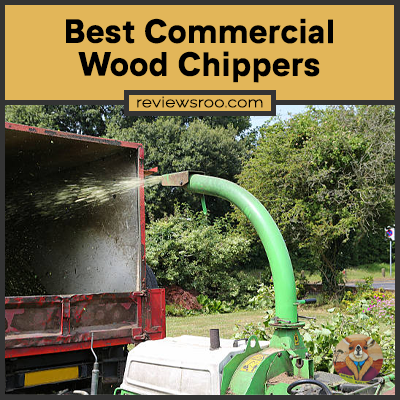Best Garden Tillers
Have you ever wondered if there truly is a best garden tiller? Maybe you’ve heard tales from your neighbor, who swears by the tiller they bought last year, or seen an advertisement for one that looks like it would be perfect for your garden. But is any of this true? Can one garden tiller really stand out amongst the rest?

In this article, we’ll do our best to answer those questions and more. We’ll look at the features of the top-rated tillers, as well as their pros and cons so you can make an informed decision on which one works best for you. We’ll also provide tips on how to maintain your tiller so that it lasts for years to come.
So if you’re looking for a reliable and efficient tool to help with all your gardening needs, then read on! This article will give you all the information you need to find the best garden tiller for your needs.
Overview Of Garden Tillers
Let’s take a journey back in time – to the days before garden tillers. Back then, gardening was difficult and labor-intensive. It took an immense amount of effort and hard work to prepare soil for planting and maintain gardens. But today, we have garden tillers!
Garden tillers make it easy to cultivate soil and break up hard ground so that it can be planted quickly and easily. They are powerful tools that allow one person to do the work of many. They come in various sizes and styles, depending on the type of gardening you’re doing.
Garden tillers are a modern marvel – they save time, energy, and effort while making gardening easier than ever before. With the right tiller, you can get your garden up and running more efficiently than ever before! Now let’s explore the different types of garden tillers available.
Types Of Garden Tillers
Gardening is a labor-intensive task, and tilling soil can be an especially daunting prospect. It’s like trying to move a mountain; you’ll need the right tools for the job. Garden tillers come in all shapes and sizes, each tailored to meet specific needs.
Tillers come in two primary types: rototillers and cultivators. Rototillers are heavy-duty pieces of equipment that use blades to break up compacted soil. They are ideal for breaking new ground or preparing large beds for planting. Meanwhile, cultivators are light-weight tools that work by slicing through topsoil with their tines. They are useful for weeding and aerating established plots of land.
Both tools have their uses, but it’s important to understand what type of job they’re best suited for – some tasks might require more than one type of tiller. Ultimately, the type of tiller you choose will depend on your individual needs and preferences.
Factors To Consider When Buying A Garden Tiller
When it comes to buying a garden tiller, there are several factors to consider. Here are four key points to keep in mind:
- Tiller size: Make sure the garden tiller you choose is appropriate for the size of your garden. A larger tiller can handle more space, but may be difficult to maneuver and require more storage space.
- Tines and blades: Consider the type of tines or blades your tiller has. Some tillers come with multiple types of blades or tines which can help you tackle different tasks faster.
- Weight: Heavier models can be difficult to move around and transport, while lighter models may not be able to break through tough soil as quickly.
- Price: How much are you willing to spend on a garden tiller? Keep in mind that higher-end models will last longer and feature higher-quality components, but also cost more upfront.
It’s important to consider all these factors when making your decision – how well the machine fits into your budget, its size and weight, and the kind of job it can do for your gardening needs. With careful research, you’ll be able to find a model that meets all your requirements without breaking the bank. Now let’s take a look at the pros and cons of different types of garden tillers.
Pros And Cons Of Garden Tillers
The garden tiller is like a loyal friend, helping you out with your gardening needs. It can be a great addition to any garden, allowing you to cultivate and loosen up soil quickly and efficiently. But it’s important to consider the pros and cons before taking the plunge.
Tillers are an excellent tool for large gardens or fields that need regular tilling – they can help you save time and energy. They’re also great for aerating hard, compacted soil since they break up clumps and make it easier to plant in. On top of that, they’re relatively lightweight, making them easy to maneuver around the yard.
However, there are downsides too. Tillers tend to be noisy – some more than others – so if you have neighbors nearby you might want to think twice about using one late at night or early in the morning. They require regular maintenance too; without proper upkeep, parts can wear out quickly and leave you with an expensive repair bill or requiring a new tiller altogether.
All things considered, tillers have plenty of benefits if used correctly – from saving time and effort to loosening up tough soil. The key is doing your research and finding the right model for your needs.
Benefits Of Using A Garden Tiller
Garden tillers are an invaluable tool for any gardener: they turn soil quickly, efficiently, and with precision. They can also save you valuable time and energy. And if you’re looking to simplify your gardening experience, a garden tiller is definitely the way to go. Here are five distinct benefits of using a garden tiller:
- Time-saving: Tilling soil by hand or with a shovel can take hours, but with a garden tiller it’s done in minutes. It helps break up large chunks of soil and create a uniform surface that’s ready for planting.
- Soil aeration: Garden tillers mix air into the soil, which helps make it more fertile and nutrient-rich. This promotes better growth of plants as well as prevents weed growth.
- Weed control: Tillers allow easy access to weeds below the surface of the soil, which makes it easier to pull them out and keep them from taking root again.
Using a garden tiller has many advantages – from time-saving to improved soil fertility – that can help make gardening easier and more enjoyable. Without one, some gardening tasks can be tedious and laborious; but with one, they become simple and efficient. And that is why garden tillers are so essential for any serious gardener. Next up? Common features of garden tillers that make them such an asset for any gardener’s toolkit!
Common Features Of Garden Tillers
Garden tillers are a fantastic garden tool, with almost magical powers to transform your backyard in an instant. They come loaded with features that can take the guesswork and hard labour out of gardening. Here’s a look at some of the common features you’ll find on most garden tillers.
First, they have powerful engines that range from small 4-cycle engines to larger 2-cycle ones. Next, they come with adjustable tilling depth controls so you can customize your tilling depth according to the job requirements. Finally, many models also feature adjustable handles for maximum comfort while operating the tiller.
These features make it easy to get your garden beds prepped and ready for planting in no time – something that would otherwise take hours of backbreaking work with a shovel or hoe. With easy-to-use adjustability, reliable power and comfortable handles, garden tillers offer a convenient way to get your garden looking its best without all the hard work. Now let’s take a look at how to use one of these amazing tools.
How To Use A Garden Tiller
Using a tiller can help you prepare your garden in no time. It’s important to understand how to use the tool before getting started.
To start, make sure the tiller is on level ground. Firmly hold onto the handles, and engage the engine with a pull of the rope or push of a button. Keep your feet firmly planted and let the tiller do its work, slowly guiding it across the area to be tilled. Don’t move too quickly or you may leave tracks in your garden. When finished, turn off the engine and be sure to clean all debris from it for safe storage.
Knowing how to use a tiller correctly is key for efficient garden maintenance. Now that you know how to get started, it’s important to take safety considerations into account before using one.
Safety Considerations With Garden Tillers
Safety is a priority when using garden tillers. It’s important to be aware of the potential risks before you begin tilling. Wear protective eyewear and gloves, and always read the manual. Make sure you understand how the machine works, and know where the on/off switch is located. Don’t start it up until you’re ready to use it.
Before beginning to work with your tiller, check for any debris or rocks in the area that may cause damage to the blades or engine. Keep kids and pets away from the machine while it’s running. Be mindful of any cords or extension leads that could get tangled in the blades, and always keep your hands free from them while operating.
To ensure safe operation, regularly inspect your garden tiller for any wear or tear, such as frayed cords or broken parts, and ensure all screws are tightened properly if needed. Now that safety considerations have been addressed, let’s look at how to maintain a garden tiller for optimal performance.
Maintenance Tips For Garden Tillers
Maintaining garden tillers is key for a successful gardening experience. To make sure your tiller is in top condition, it’s important to follow these tips.
First, check the engine oil level regularly and always use the recommended grade of oil. Secondly, keep blades sharp and replace them when necessary. You should also regularly inspect the spark plug and air filter for any dirt or debris. Finally, store your tiller in a dry place where it won’t be exposed to moisture or extreme temperatures.
It’s also important to clean your garden tiller after each use. Here’s what you need to do:
- Remove any debris from the rototiller blades.
- Check the belts and pulleys for any wear or damage.
- Lubricate moving parts such as the drive shaft using the manufacturer-recommended lubricant.
- Inspect all hoses, cables, and other components for signs of damage or wear and tear.
- Clean off any grass clippings or dirt that may have accumulated on the tiller body during use.
By taking care of your garden tiller with regular maintenance, you can ensure that it will continue to work properly for years to come. Transitioning into proper storage after each use will help keep your tiller in top condition and ready for its next job in the garden.
The Best Garden Tillers On The Market
Garden tillers are essential for cultivating a garden. But it’s tough to know which models are the best. Here’s a look at ten of the top choices on the market.
The Mantis 4-Cycle Tiller Cultivator is a great choice. It has two serrated tines, plus a high torque engine with no mixing of fuel and oil required. The Craftsman Mini-Tiller is another popular model. It’s lightweight, easy to use, and has dual rotating tines that can break up hardened soil quickly.
The Earthquake MC43 Mini Cultivator is powerful enough to handle tough tasks, but small enough to maneuver in tight spots. The Husqvarna DRT900H is one of the most powerful tillers available, with an adjustable tilling width from 8 to 11 inches and an ergonomic handlebar design for comfort during operation.
For large jobs, consider the Sun Joe TJ603E Electric Tiller/Cultivator. It delivers an impressive 17-inch cutting width and eight-inch cutting depth, plus it’s electric power makes it more eco-friendly than gas-powered models. And if you need something heavy duty, check out the Troy-Bilt Horse Rear-Tine Tiller – its 14-inch wide tines make short work of even the toughest soil conditions.
These are just some of the best garden tillers on the market today – each one offering something special for gardeners looking to cultivate their gardens efficiently and effectively. With so many options available, there’s sure to be something that fits your budget and needs perfectly!
Frequently Asked Questions
What Is The Difference Between A Tiller And A Cultivator?
Tillers and cultivators are like two sides of the same coin, each offering their own unique benefits to gardeners. While both tools have similar purposes, they differ in their design, power source and usage.
The biggest difference between a tiller and a cultivator is the size of the engine. Tillers typically use much larger engines than cultivators, ranging from four to sixteen horsepower or more. They also have a deeper tilling depth, making them great for breaking up hard-packed soils. On the other hand, cultivators have smaller engines and shallower tilling depths, making them more suitable for light tilling tasks such as loosening soil for planting or weeding.
So if you’re looking to tackle tough jobs in your garden with greater efficiency, then you’ll likely want to go with a tiller. But if you need something that’s lightweight and easy to maneuver around tight spaces, then a cultivator may be better suited for your needs. Ultimately it comes down to understanding how each tool works and knowing which one will best suit your specific gardening needs.
Can A Garden Tiller Be Used On A Sloped Surface?
Using a garden tiller on a sloped surface can be tricky. It depends on the angle of the slope and how well it is maintained. Generally, use caution when operating a tiller on sloped surfaces. The risk of injury increases due to the potential for the machine to become unbalanced and tip over or slide down the hill.
When using a tiller on a sloped surface, you should make sure that the depth of your tillage is shallow. This reduces the risk of having the machine become stuck in deep soil or rock as it moves across the slope. You should also take extra care to ensure that you are properly grounded while operating, so that you don’t lose your balance while working.
TIP: When using a garden tiller on a sloped surface, choose an area with no trees or large rocks that could cause obstacles or hazards. Make sure you reduce your tillage depth and wear protective gear such as gloves and goggles for safety purposes.
How Much Does A Garden Tiller Typically Cost?
Garden tillers are a great tool for the avid gardener. They can help break up hard soil, making it easier to plant and weed. But how much does one cost?
On average, basic garden tillers range from around $200 to $400. However, they can cost more if they come with additional features like larger engines or multiple tilling speeds. Professional grade tillers also tend to be more expensive, ranging from $500 to as much as $1,000.
TIP: If you’re not sure which tiller is best for you, try talking to experts at your local garden center or hardware store. They’ll be able to give you advice on what type of tiller will best fit your gardening needs.
What Is The Best Way To Store A Garden Tiller When Not In Use?
Storing a garden tiller can be tricky. Garden tillers are bulky and not easy to maneuver, so you’ll need to come up with the best way for your particular machine. One thing’s for sure: you don’t want it to take up valuable space in your garage or shed when it’s not in use.
The first step is to make sure the tiller is clean and dry before you store it away. If there is any moisture left on it, rust can form and cause permanent damage. Once it’s clean, you can move onto finding a secure place to store it. An ideal spot would be an area that’s free of debris and dust, preferably with some kind of cover over the tiller itself. Something like an old bed sheet or a heavy-duty plastic drop cloth should do the trick! Make sure there are no sharp objects nearby that could damage the tiller while in storage; if you’re worried about bugs or other pests getting into the machine, consider investing in some mothballs or cedar chips to keep them out.
Finding a good storage solution for your garden tiller might seem like a daunting task, but with a little bit of preparation and patience, you’ll have your machine tucked away safely in no time at all!
Is A Garden Tiller Suitable For Aerating Soil?
A garden tiller is a useful tool for larger gardens. It can make cultivating and soil preparation much easier. But the question remains: is a garden tiller suitable for aerating soil?
The answer is yes – with some caveats. A garden tiller can be used to shallowly aerate the soil, but more intensive aeration should be done with other tools. This is because a garden tiller’s blades are not designed to reach deep enough into most soils and are better suited for lighter jobs like weeding or turning over small patches of ground.
TIP: When using a garden tiller for aeration, always take care not to dig too deeply into the soil. Doing so can disrupt important root systems and damage your plants in the long run.
Conclusion
Garden tillers are invaluable tools for gardeners. They can make tending to large gardens a breeze, and they’re great for aerating soil in order to ensure that your plants get the nutrition they need. If you’re looking for the best garden tiller, there are several important factors to consider: cost, size and weight, as well as whether or not it can be used on a sloped surface. With so many options available, it’s important to do your research before making a purchase.
Once you’ve chosen the perfect tiller for your needs, it’s essential to take proper care of it. Storing it away from moisture and extreme temperatures is key, as these conditions can cause rust and other damage that could shorten its life span. Taking proper care of your tiller will help ensure that it lasts for years to come and continues to provide you with excellent gardening results.
Garden tillers have an almost magical ability to transform any garden into a beautiful oasis of lush vegetation – all thanks to their amazing power and efficiency! As long as you choose the right model and take good care of it, your tiller will be a reliable companion in tending to your garden’s needs.





